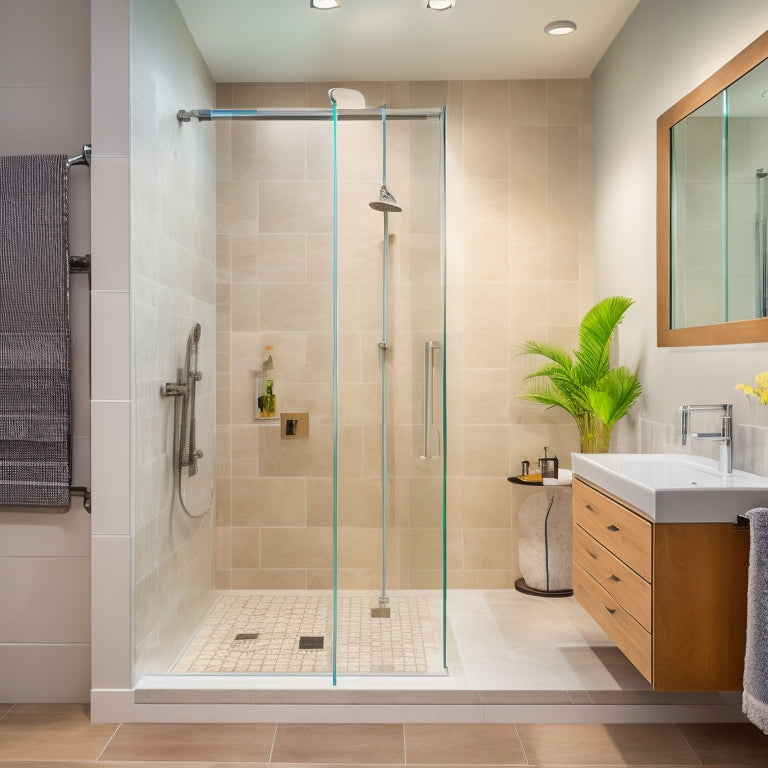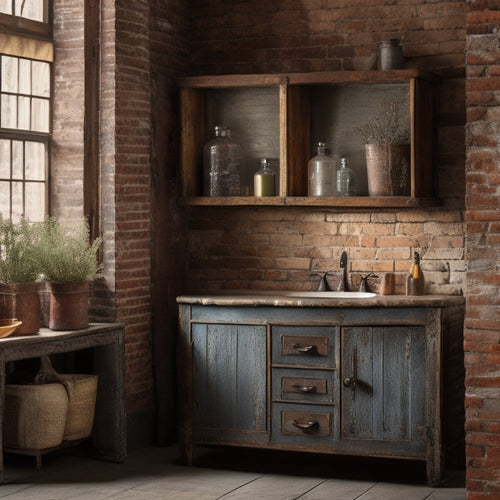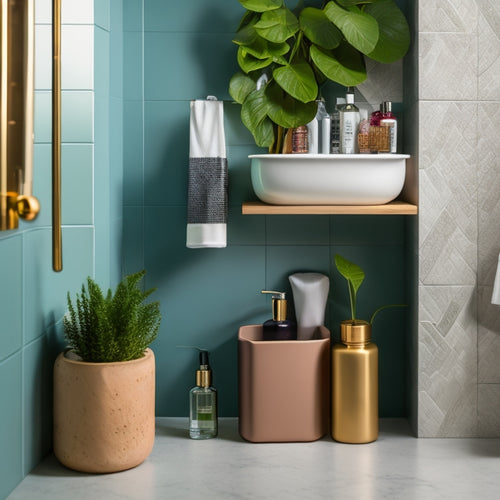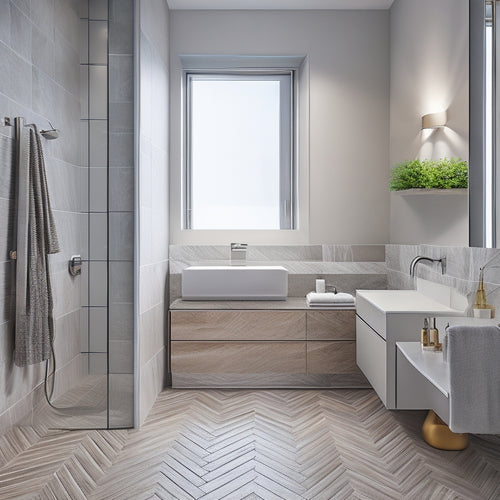
Master the Art of Shower Installation
Share
Mastering shower installation demands a meticulous approach, combining thorough planning, precise execution, and a deep understanding of shower components' intricate relationships. A well-planned checklist guarantees acquisition of necessary materials and tools, mitigating costly mistakes and stress. Successful installation requires adaptation to overcome unexpected challenges, understanding local plumbing codes, and selecting compatible shower fixtures. Proper drain installation and harmony among components are vital for a well-designed shower system. By grasping these essential elements, you'll reveal the secrets to a stress-free, high-quality shower installation - and discover the nuances that set a true master apart.
Key Takeaways
• A thorough plan and checklist are essential for a successful shower installation, helping to anticipate and prepare for potential obstacles.
• Understanding the intricate relationships between shower components is crucial for a well-designed shower system, ensuring harmony and compatibility.
• Proper drain installation is vital to prevent water damage and ensure safety, and requires careful selection of compatible fixtures and valves.
• Troubleshooting tips and installation hacks are necessary to overcome unexpected challenges that arise during installation.
• Familiarity with local plumbing codes is necessary to prevent costly rework and ensure a high-quality installation that meets regulatory standards.
Planning for Success
Developing a thorough plan and checklist is vital to guaranteeing a successful shower installation. It allows homeowners to anticipate and prepare for potential obstacles and unforeseen complications. A well-planned approach enables individuals to identify and address critical aspects, such as waterproofing techniques and plumbing solutions.
A detailed checklist helps make sure that all necessary materials and tools are acquired, and that the installation process proceeds efficiently. By prioritizing planning, homeowners can minimize the risk of costly mistakes, reduce stress, and achieve a high-quality shower installation that meets their needs and expectations.
Overcoming Installation Challenges
As a well-planned shower installation progresses, unexpected challenges often arise, requiring homeowners to troubleshoot and adapt their strategy to overcome these obstacles and guarantee a successful outcome. Effective troubleshooting tips and installation hacks can make all the difference in resolving issues efficiently.
For instance, having a thorough plan and checklist in place can help identify potential problems early on, allowing for swift adjustments. Additionally, understanding local plumbing codes and regulations can prevent costly rework.
Mastering Shower Components
Mastering shower components requires a thorough understanding of the intricate relationships between the showerhead, faucet, valve, and drain, as well as their individual functions and installation requirements.
A well-designed shower system relies on the harmony of these components to provide a seamless bathing experience.
Shower fixtures, such as showerheads and faucets, must be carefully selected to guarantee compatibility and peak performance.
Proper drain installation is also vital to prevent water damage and ensure a safe and functional shower area.
Frequently Asked Questions
What Are the Necessary Tools for a Successful Shower Installation?
For a successful shower installation, necessary tools include a laser level for precise shower layout and drain placement, a drain snake for clog removal, and a waterproofing membrane applicator for a durable and leak-free installation.
Can I Reuse Old Plumbing Fixtures During a Shower Renovation?
When repurposing old plumbing fixtures, verify fixture compatibility and conduct a thorough plumbing inspection to identify potential issues, as incompatible or faulty fixtures can lead to leaks, water damage, and safety hazards.
How Do I Ensure a Watertight Seal Around the Shower Faucet?
Ironically, a watertight seal around the shower faucet is often compromised by overlooking the nuances of faucet materials, sealant types, and precise faucet positioning, whereas opting for reputable silicone brands, ensuring superior gasket quality, and selecting compatible shower heads can guarantee a leak-free experience.
What Is the Recommended Spacing for Shower Tile Grout Lines?
For ideal aesthetic and functionality, recommended spacing for shower tile grout lines is 1/8 to 1/2 inch, depending on tile size and pattern, ensuring proper grout adhesion and minimizing visual disruption to the overall tile design and grout color.
Are There Specific Shower Pan Materials Recommended for Waterproofing?
When selecting shower pan materials for best waterproofing, consider Acrylic's advantages, including seamless construction and ease of cleaning, or Stone's benefits, such as natural resistance to water and durable performance, ensuring a watertight seal.
Related Posts
-

Vintage Metal Bathroom Storage for Industrial Look
If you're aiming for that chic industrial look in your bathroom, vintage metal storage is the perfect choice. These p...
-

Stylish and Practical Shower Caddy Designs
When it comes to stylish and practical shower caddy designs, you've got plenty of options that effortlessly blend fun...
-

Contractor's Cost-Saving Tile Strategies and Designs
When tackling a tile project, I've learned that smart design decisions can lead to significant savings. By prioritizi...


